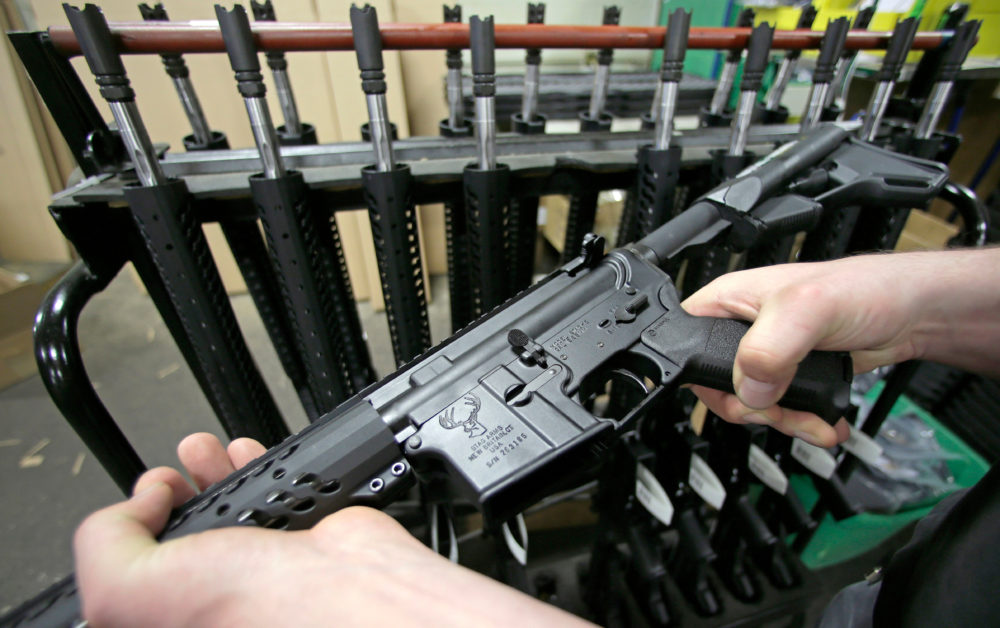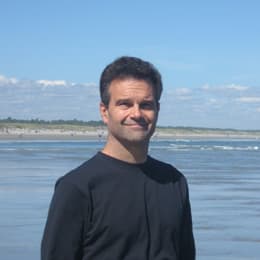Advertisement
Commentary
Does Boston Show The Way Out Of Our Gun Madness?

By the time you’re reading this, I don’t know whether the casualties from the weekend’s back-to-back mass shootings in El Paso and Dayton will have surpassed the 31 deaths tallied as I write. I do know that when I learned of the Texas slaughter, from the priest at Saturday’s Mass who prayed for the victims, a riptide of not again helplessness dragged me under. When Sunday morning’s TV news broke the Dayton killings, helplessness gave way to shock. Two massacres less than one day apart?
Based on research, experience (both other nations’ and our own with other public health issues), and, until recently, longstanding Supreme Court interpretation of the Second Amendment, we know that any number of commonsense safety laws could curb the nation’s outsized appetite for firearms carnage. Based on a non-delusional grasp of reality, we know not to expect common sense from Congress as currently configured.
We also know a few hopeful things. Some cities have averted potential tragedies with mental health and law enforcement teams that take public tips about possibly dangerous individuals, monitoring them for things like social media rants. (An Hispanic-hating manifesto, possibly by the El Paso gunman, posted minutes before the mayhem there.) This approach bypasses the firearms regulation debate that drives gun nuts, well, nuts, making them obstruct any solutions.
Yet as horrific as mass shootings are, they account for fewer than 2% of American gun deaths each year. Most gun violence in most cities is committed by a few people in a few neighborhoods. And there’s a proven way for handling that, too.
... as horrific as mass shootings are, they account for fewer than 2% of American gun deaths each year.
A data-driven approach to those crimes, pioneered in Boston and targeting crime-fighting tactics rather than weapons, could save lives while doing an end-run around fanatics who think the Second Amendment is entitles gun buyers to an all-you-can-eat buffet stuffed with any weapon that goes bang. Here’s a question for the presidential candidates: Would you support nationwide implementation of the Boston approach?
In those days of yore known as the Clinton administration, Boston preachers took a Godly gamble, walking the meanest streets at night to coax kids and young people — the font of most crime — into conversation. Learning that their law-breaking stemmed from factors like poverty more than a desire to do harm, the ministers flooded the neighborhoods with teams: police, yes (arrests of bad guys didn’t stop, and those at risk of becoming bad guys were warned of the consequences), but also providers of job training, schooling and other services.
This “focused deterrence” engineered a 79% drop in violent crime in Boston, and a 60% plunge in youth homicides. Today, the case for focused deterrence is made in a new book from Harvard criminologist Thomas Abt, in other research, and on the streets of cities from Newburgh, New York to Oakland.
The “focus” of focused deterrence is on the discrete number of people who commit most crimes. “In most cities across the nation,” Abt wrote in Vox, “3 to 5 percent of city blocks account for 50 to 75 percent of all shootings and killings, with 1 percent of a city’s population responsible for 50 to 60 percent of all homicides.”
Boston was hardly alone in seeing crime fall, and as cities like New York achieved similar results with different tactics, broader forces certainly were at work, though experts disagree on what those were. But neither is Boston the lone laboratory testing focused deterrence.
The “Oakland Ceasefire” began with research identifying residents most likely to commit gun violence, then followed up with meetings with those individuals—not just with police but clergy, social service providers, and others who might deflect the violence-prone from hurting others and throwing their own lives away in the process. It’s a savvy version of Donald Trump’s art of the deal: We’ll help you with employment, schooling, and health care to address your problems; in return, you keep your nose clean, or else.
Results: Over the five years ending in 2017, the city’s homicide rate was halved, and the police rate of solving murders jumped from less than one-third to south of three-quarters.
Besides side-stepping feverish objections to safety laws, focused deterrence is affordable. “It doesn’t seek to dismantle gangs — just to keep them from shooting,” a New York Times writer noted about Newburgh’s experience. “No mass arrests are necessary to send a message that the community condemns violence. Mothers, pastors and youth leaders tell criminals so, directly.”
Besides side-stepping feverish objections to safety laws, focused deterrence is affordable.
Social services do cost money, but as one criminologist told Vox, they give “a certain legitimacy to the police [in dangerous neighborhoods]. They’re not there to just serve warrants or warn people about what’s going to happen to them if they commit another crime, but also conveys a certain degree of concern for those individuals and their lives.”
Perhaps a more persuasive advocate is Duke Denis. His arrest record dates to 2002, when he was 16. One of seven siblings, he’s a child of divorce. He joined a gang and took a bullet in the back from a rival group. Ten years ago, after prison and while on probation for assault and theft, he attended a mandatory meeting in Long Island, N.Y., with police and local residents as part of a focused deterrence program.
“I knew I never wanted to go back” to jail, he told The Guardian. “When they showed me everything they knew, I thought I was either going to be the best criminal I can ever be or quit. And I remember they said: ‘We don’t want to lock you up.’” A cop who took an interest in him gave him her card, and they kept in touch. Today, he runs a photo business.
“I hated them back then,” Denis said of the police. “I don’t hate them anymore.”
